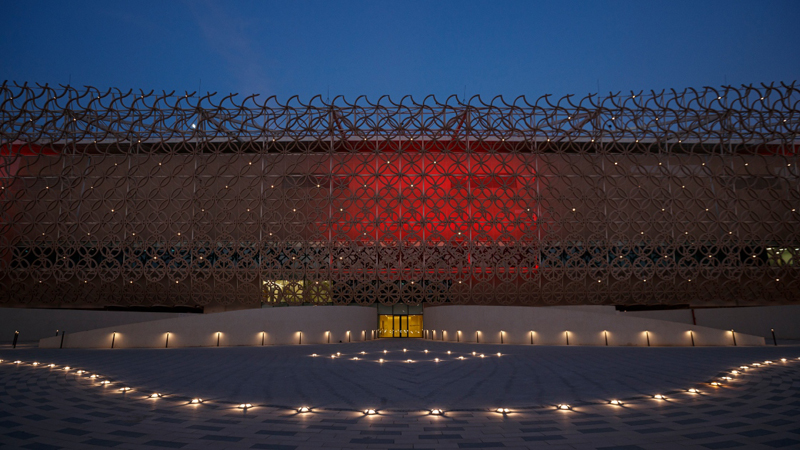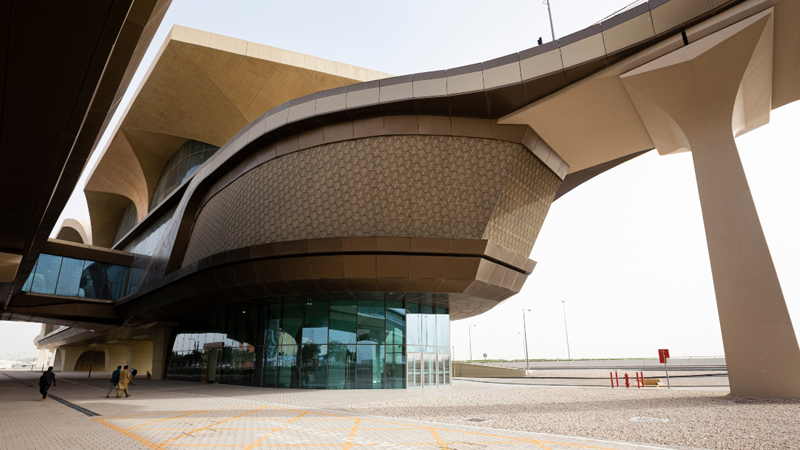
Doha: Al Rayyan Venue is the latest FIFA World Cup Qatar 2022 stadium to be completed by the Supreme Committee for Delivery & Legacy.
It’s the fourth venue to be unveiled following the successful redevelopment of Khalifa International in 2017 and the inaugurations of Al Janoub (2019) and Education City (2020).
Two more stadiums are expected to open in the near future: Al Bayt and Al Thumama. All eight stadiums will be delivered well in advance of the tournament, which kicks off on 21 November 2022.
Al Rayyan Venue will be inaugurated ahead of the Amir Cup final between Al Sadd and Al Arabi on 18 December. Here are five key facts about the stadium:

1- Visually stunning, culturally important
The stadium’s design reflects the story of Qatar. Its most striking feature is a glowing façade, comprised of patterns that characterize different aspects of the country: the importance of family, the beauty of the desert, the native flora and fauna, and local and international trade. A fifth shape, a shield, brings together all the others, representing the strength and unity that is particularly relevant to the proud desert city of Al Rayyan.
2- Round of 16 venue during Qatar 2022
During Qatar 2022, the stadium will host seven matches up to and including the round of 16 stages. The stadium’s seating capacity during the tournament will be 40,000. After Qatar 2022, the capacity will be reduced to 20,000 following the removal of the modular upper tier, with the seats being re-purposed into sporting facilities across Qatar and overseas. It will also become the home of Al Rayyan Sports Club, one of the most popular football teams in the country.
3- Qatar's ‘gateway to the desert’
The stadium is situated in one of Qatar's most historic cities, which sits close to Doha on the way to beautiful desert landscapes. A tight-knight, family-oriented community, Al Rayyan will be transformed into a regional sporting hub, where locals will have the opportunity to experience the many other sporting facilities that spring up as part of the stadium complex. Six football training pitches, a cricket pitch, horse riding track, cycling track, gym equipment and an athletics track are just some of the facilities that the community can look forward to using.
4- Turning old into new
From its very conception, the stadium has had sustainability at its core. More than 90% of the construction materials used in the project have been reused or recycled, with many of those materials sourced from the old Ahmed Bin Ali Stadium, which once occupied the site. This includes materials that were re-purposed into public art installations. Trees that once surrounded the old venue were retained for future replanting in order to minimise damage to the natural environment, while energy and water efficiency measures have been embedded to further reduce the stadium's carbon footprint. The precinct will feature 125,000m² of green space, along with native, low-water consumption plants for the community to enjoy.

5- Direct access via Doha Metro
Convenient access to the stadium is provided by the Doha Metro. Al Riffa Station – on the Green Line – is within walking distance of the venue. A single ticket on the Doha Metro is QAR 3 (US$0.82), while a day pass costs QAR 9 (US$2.47).





